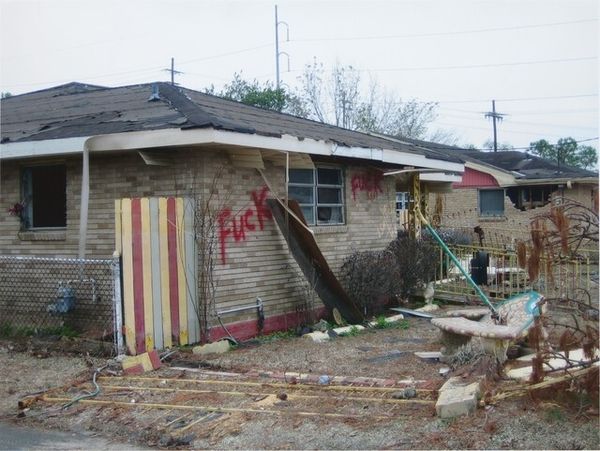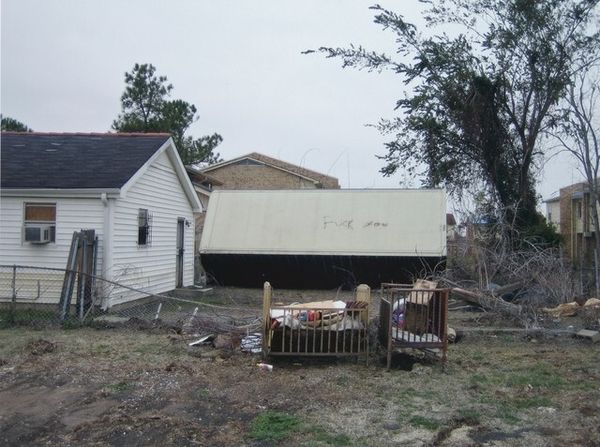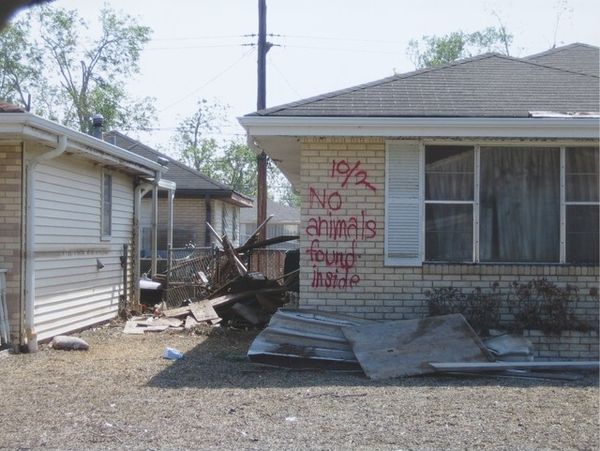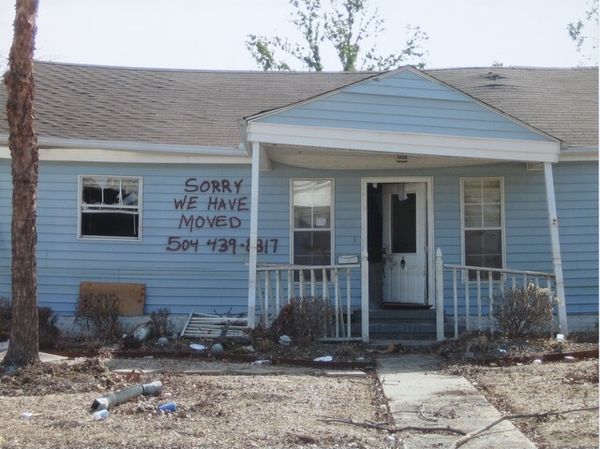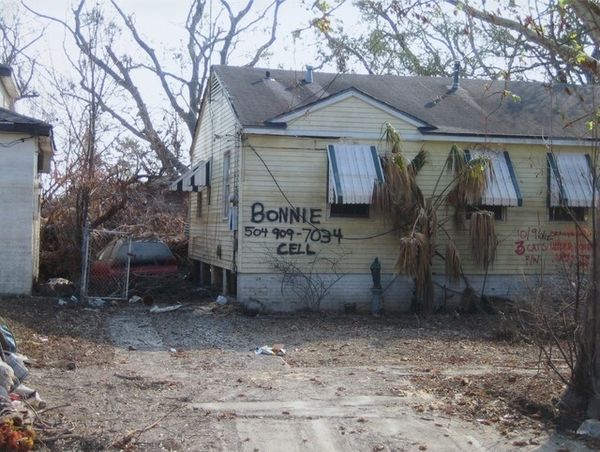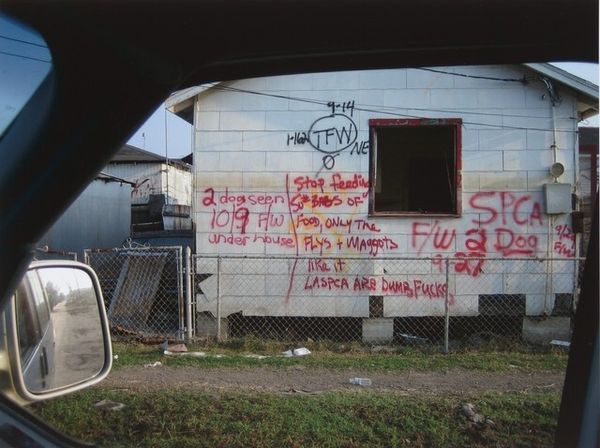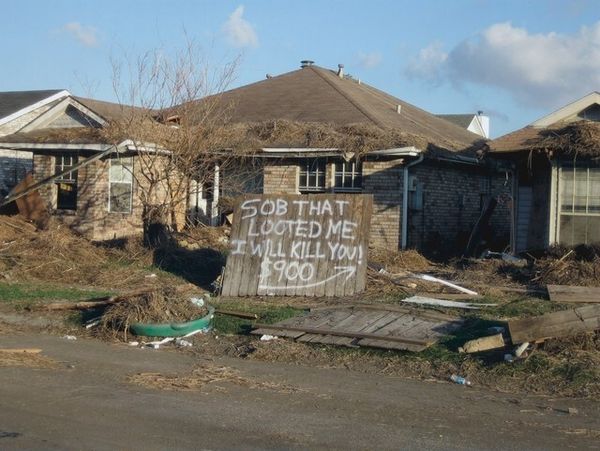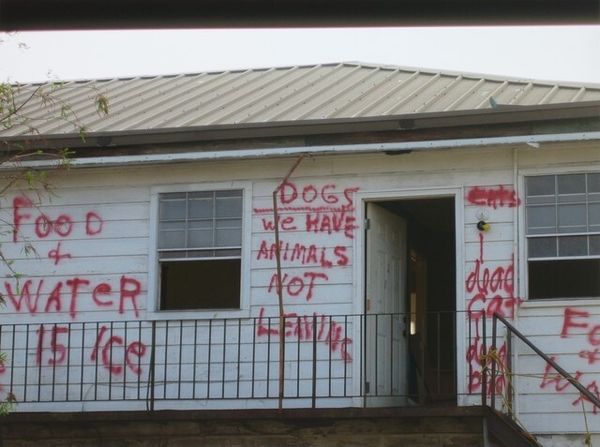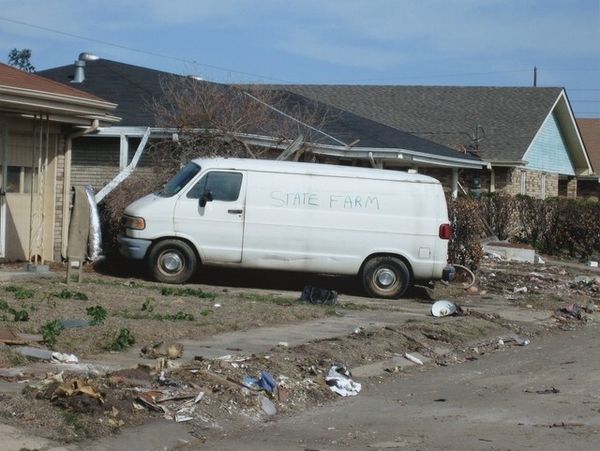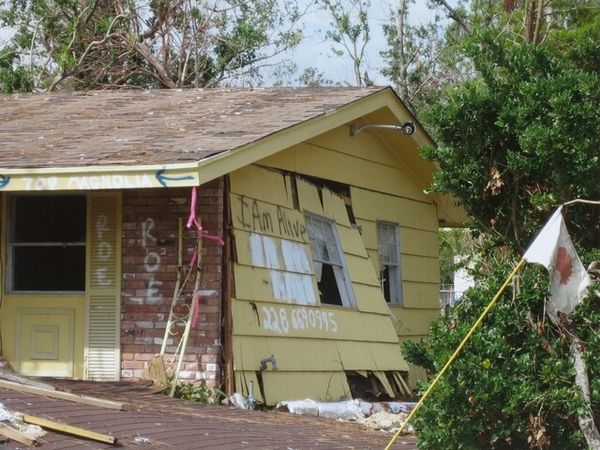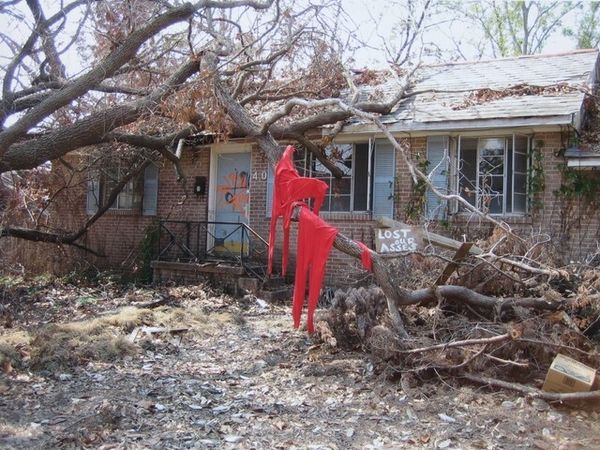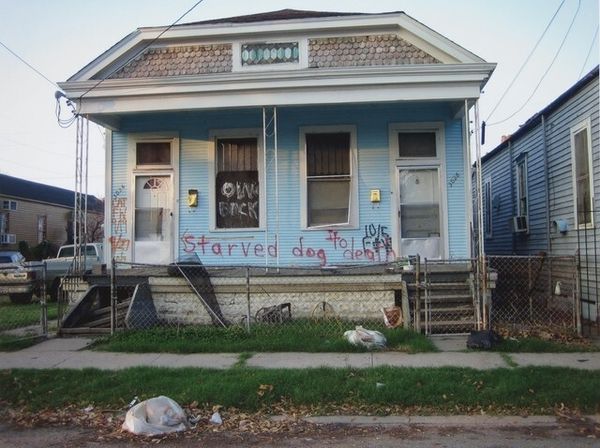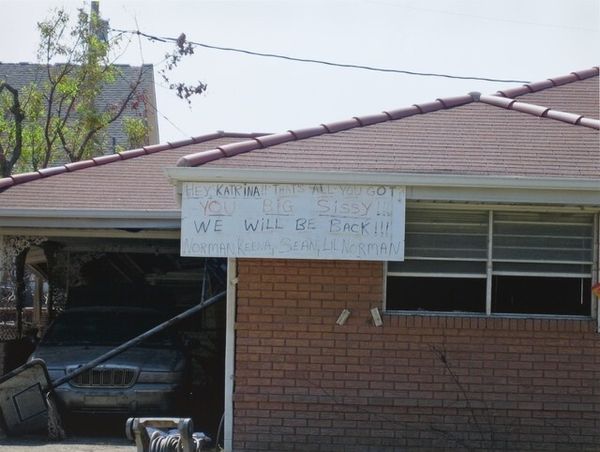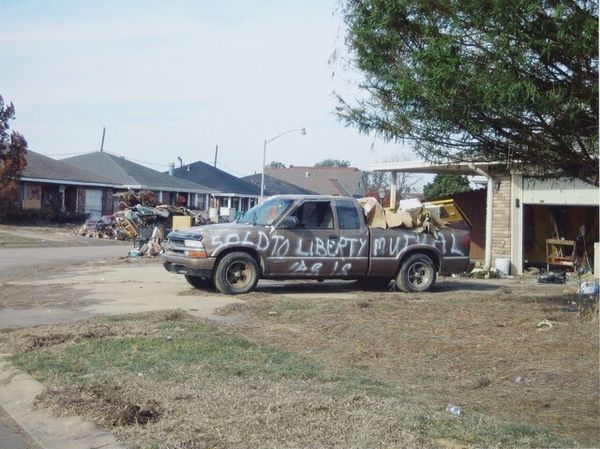![Untitled [New Orleans and the Gulf Coast, 2005] by Richard Misrach](/_next/image?url=https%3A%2F%2Fd2w8kbdekdi1gv.cloudfront.net%2FeyJidWNrZXQiOiAiYXJ0ZXJhLWltYWdlcy1idWNrZXQiLCAia2V5IjogImFydHdvcmtzLzEwMTAzMDVjLTgwMjYtNDJiYy1hZDExLTI2NTFmZTE5M2M0MC8xMDEwMzA1Yy04MDI2LTQyYmMtYWQxMS0yNjUxZmUxOTNjNDBfZnVsbC5qcGciLCAiZWRpdHMiOiB7InJlc2l6ZSI6IHsid2lkdGgiOiAxOTIwLCAiaGVpZ2h0IjogMTkyMCwgImZpdCI6ICJpbnNpZGUifX19&w=1920&q=75)
Untitled [New Orleans and the Gulf Coast, 2005] Possibly 2005 - 2010
0:00
0:00
Dimensions: image: 27.62 x 36.83 cm (10 7/8 x 14 1/2 in.) sheet: 28.89 x 38.1 cm (11 3/8 x 15 in.)
Copyright: National Gallery of Art: CC0 1.0
Curator: Looking at Richard Misrach's photographic work, Untitled [New Orleans and the Gulf Coast, 2005], taken sometime between 2005 and 2010, one is immediately struck by the weight of absence, don't you think? Editor: Yes, it’s quite visually chaotic at first glance. There is an overall impression of neglect, evidenced by the asymmetrical balance and disarray of materials in the scene—a direct, raw depiction. Curator: Exactly. The location seems devastated, possibly by Hurricane Katrina, looking at the likely date and place, though unconfirmed. One can sense the immediate aftermath, before any real cleanup efforts would have begun, which makes the spray-painted words feel particularly desperate. Editor: The spray paint indeed acts as an intruding textual layer upon a reality already fractured. Semiotically, the house transforms into a communicative surface. The means of visual communication are jarring, reflecting disruption. Curator: And what about the production of this image? It raises questions. The printing of such an image serves both documentation and distribution; who is the intended audience and how are they implicated in this devastation? Editor: True. Thinking of purely formal choices, I find that washed-out color palette significantly impacts how we read the image. The muted tones enhance the sense of decay and desolation; a visual strategy employed to evoke feelings about this destroyed scene. Curator: Agreed. I am intrigued by the contrast of human appeal of tagging versus complete failure of social protection and help by federal actors. The image operates at many social levels while also pointing fingers. Editor: From a purely pictorial stance, I notice how the sharp contrast works to build both a foreground, filled with tangled vegetation, and background containing what can only loosely be called a structure. A house it seems to be; not any longer really a home, certainly. It adds to this visual paradox you are outlining. Curator: And isn't it interesting to ponder the artist's intentions as someone from outside the affected community, too? His role, his labor in creating and presenting such works opens questions about ethical spectatorship and distribution in a media obsessed environment. Editor: Yes. So while, at first, this photograph communicates disorder and suffering, it actually provokes conversations concerning wider cultural issues related to accountability during extreme duress. Curator: Well said; It is clear Misrach makes us ask difficult questions about the aftermath and responsibility—socially and formally. Editor: Ultimately, it offers more than initially meets the eye: Misrach prompts an in-depth reflection around society and representation through simple, raw vision.
Comments
No comments
Be the first to comment and join the conversation on the ultimate creative platform.
